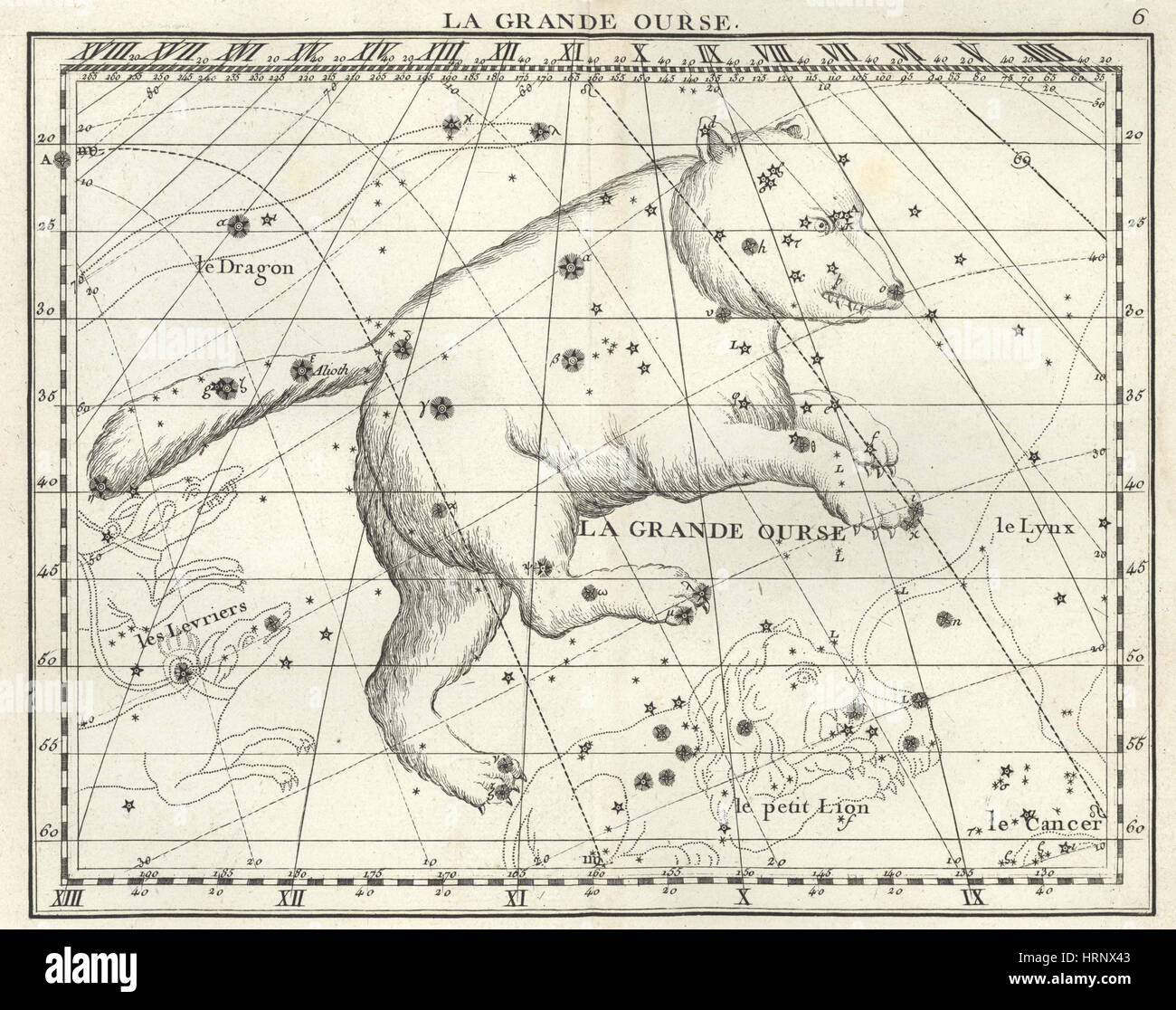Ursa Major Constellation, 1729

Image details
Contributor:
Science History Images / Alamy Stock PhotoImage ID:
HRNX43File size:
29.3 MB (1.5 MB Compressed download)Releases:
Model - no | Property - noDo I need a release?Dimensions:
3600 x 2843 px | 30.5 x 24.1 cm | 12 x 9.5 inches | 300dpiPhotographer:
Photo ResearchersMore information:
This image could have imperfections as it’s either historical or reportage.
Ursa Major, also known as the Great Bear, is a constellation visible throughout the year in most of the northern hemisphere. It was one of the 48 constellations listed by the 2nd century astronomer Ptolemy, and remains one of the 88 modern constellations defined by the International Astronomical Union. It is dominated by the widely recognized asterism known as the Big Dipper or Plough, which is a useful pointer toward north, and which has mythological significance in numerous world cultures. The seven brightest stars of Ursa Major form the asterism known as the Big Dipper in the United States and Canada, or the Plough in the United Kingdom and Ireland. The Atlas Coelestis is a star atlas published posthumously in 1729, based on observations made by the First Astronomer Royal, John Flamsteed. The Atlas, the largest that ever had been published and the first comprehensive telescopic star catalogue and companion celestial atlas, contains 26 maps of the major constellations visible from Greenwich, with drawings made in the Rococo style by James Thornhill. One of his main motivations to produce the Atlas, was to correct the representation of the figures of the constellations, as made by Bayer's, Uranometria (1603). Bayer represented the figures viewed from behind (not from the front, as was done since the time of Ptolemy), which reversed the placement of stars and created unnecessary confusion.